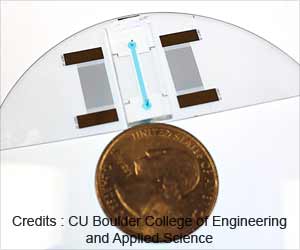A study conducted at Boston University School of Medicine (BUSM) shows that MRI detected a high prevalence of abnormalities associated with knee osteoarthritis in and elderly patients.

Osteoarthritis, the most common form of arthritis, is characterized by a degeneration of cartilage and the underlying bone and other soft tissues in the joints, leading to pain and stiffness. According to the Centers for Disease Control and Prevention, osteoarthritis is the leading cause of disability in the United States, affecting approximately 26.9 million Americans. It is responsible for a significant portion of primary care visit and hospitalizations and has a large financial impact on health care. With the aging population, it is anticipated that the prevalence of osteoarthritis will continue to increase.
Prior studies have shown that only half of those with knee pain will have X-ray evidence of osteoarthritis. This study looked at how to further evaluate a patient's knee pain if X-rays don't show evidence of osteoarthritis. It also looked at whether MRI, in these cases, is of clinical value.
This observational study looked at the prevalence of MRI-detected abnormalities in a group of adults over the age of 50 who had no signs of knee osteoarthritis in X-ray images. The researchers looked at right knee MRIs of 710 ambulatory patients from the Framingham Osteoarthritis Study. Further analysis was performed on groups by age, gender, body mass index and the presence or absence of knee pain.
The results showed that approximately 90 percent of the knees that showed no signs of osteoarthritis using X-ray showed clear signs of osteoarthritis using MRI. In addition, MRI abnormalities were highly prevalent even in persons whose knees were not painful, suggesting that MRI was not a useful diagnostic test in this age group to evaluate knee pain.
"This data demonstrates a very high prevalence of MRI-detected osteoarthritis features in knees with no X-ray evidence of the disease," said Guermazi. "While the MRI could be detecting early-stage osteoarthritis, further research is needed to determine what proportion of these individuals are diagnosed with knee osteoarthritis later in life."
Advertisement
Source-Eurekalert















